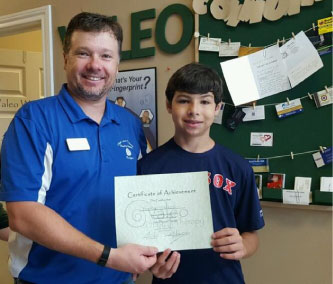5 Good Stretches for Low Back Pain Relief
Maintaining mobility and flexibility of the joints, muscles, and nerves are very important to ensure that there are no restrictions, limitations, or imbalances in the musculoskeletal & nervous system. It is important to understand the difference between mobility and flexibility and why each is important.
Flexibility is the ability of our muscles, joints, and nervous system to move through range of motion without load. A good example of this is the laying on your back hamstring stretch where you put a strap around your foot and pull the leg up keeping the knee straight. Your flexibility is indicated where you feel the stretching sensation along the back of your upper leg. Mobility is the ability to use the flexibility your joints, muscles, and nervous has. Another example using the hamstring is the good morning move. Here, while standing straight with your knees just unlocked you hinge forward at the hips until you feel a stretch sensation in the hamstrings. This motion may be less than your hamstring flexibility because your muscles now have to control the motion.
The focus of this article is on decreased flexibility. Lacking flexibility anywhere in the musculoskeletal system may contribute to lower back pain. IMPORTANT NOTE: Not all of the following stretches may be appropriate for everyone. Stretching should not induce painful symptoms. Ideally, a stretch should help with low back pain relief. Below are explanations of stretches (source: Athletico.com), which are right on point with what you need. I hope this can help give you some relief for your low back pain but if not you can always speak to our licensed Physical Therapist and receive a free screen.
LUMBAR EXTENSION STRETCHES FOR LOW BACK PAIN RELIEF
Generally these are good for individuals who may have a disc herniation. They should be performed with caution for anyone who has spinal stenosis or any known fractures in their vertebrae.
Prone Press Up: Begin by lying on your stomach with your elbows bent underneath you and palms flat on the surface. Keeping your hips and pelvis in contact with the surface, lift your upper torso off the mat with your arms, keeping your back muscles relaxed. Only go as high as you are comfortable. Perform 10 repetitions holding each one for 10 seconds each, working your way to 30 seconds.
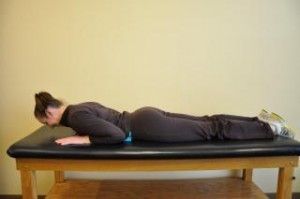
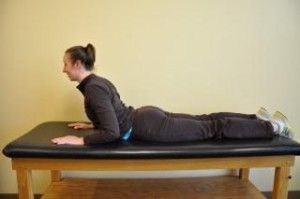
LUMBAR FLEXION STRETCHES FOR LOW BACK PAIN RELIEF
Generally, the flexion (bending forward) based stretches are good for those with spinal stenosis or tightness through the lower lumbar musculature.
Single Knee to Chest: Begin by lying on your back with both knees bent. Bring one knee up towards your chest. Perform 2-3 repetitions, holding each for 15-30 seconds. You may feel a stretch along the lower back or buttocks area. You may also perform this with both legs up towards your chest if it is comfortable.

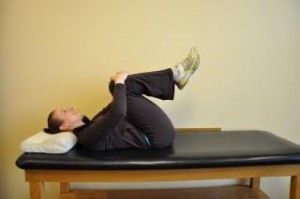
Prayer Stretch or Child’s Pose: This stretch is for the lower back muscles along the spine and is a very common yoga pose. (USE caution or get medical clearance if you have a known history or prior treatment for herniated discs.) On your hands and knees, sit back so your buttocks are resting on your heels. Reach your hands forward to lengthen your spine and feel a stretch in your middle back. You can reach your hands to either side to focus the stretch on the opposite side of your spine if you like. Hold for 10-30 seconds and perform 2-3 repetitions.
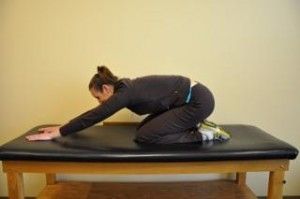
Angry Cat Stretch: This stretch can incorporate both an extension and a flexion component. You may perform either way or just one way if that is more comfortable for you. On your hands and knees, let your belly sag towards the table to increase extension through your spine (lumbar extension picture). To increase flexion through your spine, arch your back upwards, bringing your spine away from the table (lumbar flexion picture). You may hold each position for 5-20 seconds and repeat several times.
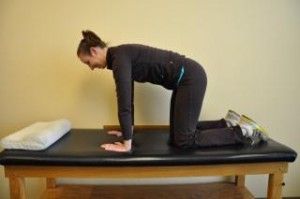
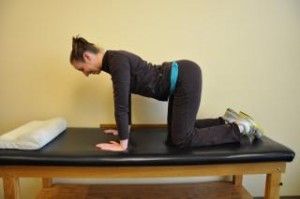
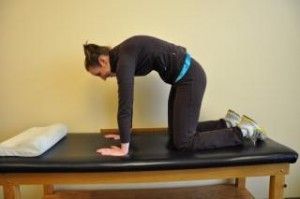
NERVE STRETCHES FOR LOW BACK PAIN RELIEF
Just as you can stretch a muscle, you can stretch a nerve. Nerve stretches are very important to perform if you have any radiating pain from your lower back into your buttocks or legs. It is also very important to know that your radiating symptoms are nerve versus muscle referral. If you are unsure schedule with your local physical therapist to make sure you are addressing the proper tissue. Nerve stretches are also very important to perform after lumbar surgery to ensure that there is not any scar tissue adhering the nerve to any internal structures.
Sciatic Nerve Stretch: This stretch should be performed if the majority of the radiating pain into the legs is felt in the buttocks, back of the leg, and/or through the calf and foot. This follows the pathway of the sciatic nerve. By stretching the nerve, it can help to desensitize it so that it will not cause as much pain. Perform this stretch by lying on your back with your hand behind one knee, preferable the leg with the sciatic pain. Straighten your knee then alternate flexing your ankle back and forth. Only hold your ankle in each position for a few seconds. Perform 10 repetitions on each side.
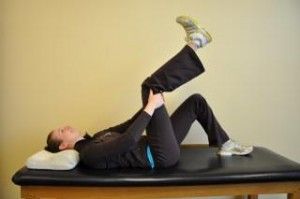
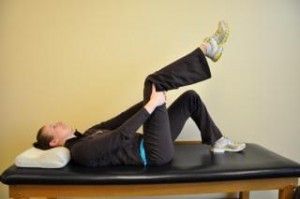
As with beginning any new exercise, start off slowly with a very gentle stretch. Stop if you have any increase in lower back pain or sciatic pain down your leg. If unsure whether you should perform these stretches please call Valeo Physical Therapy at (281) 402-1208 and speak to one of our licensed Physical Therapists.
Paul E. Colosky Jr., MPT, MS, LAT, CSCS
 Valeo Physical Therapy
Valeo Physical Therapysource: Athletico.com
